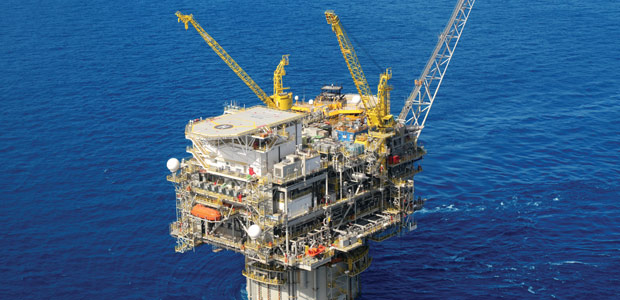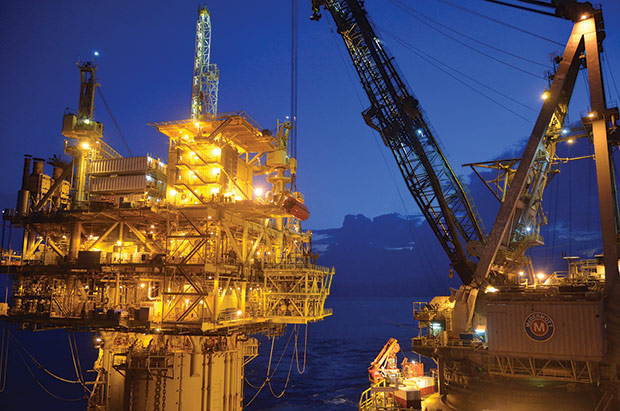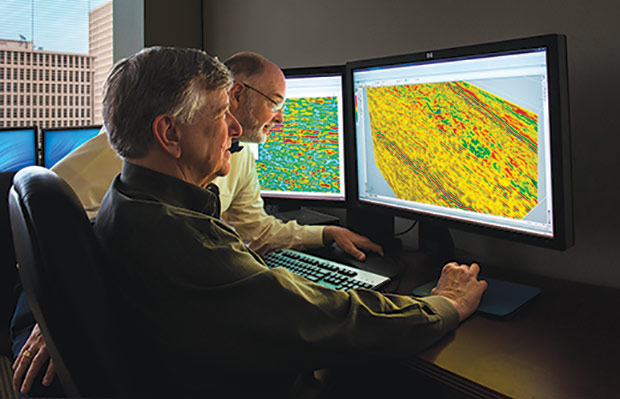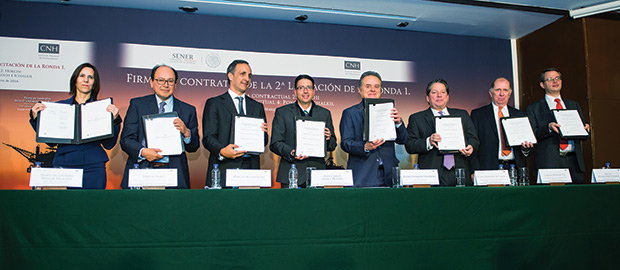
GOM Update
Gulf Operators Leverage Past Successes To Seize New Opportunities
By Colter Cookson
Operators are playing the long game in the Gulf of Mexico, where even the fastest of “fast-track” projects has a development schedule measured in years.
While the prevailing commodity price cycle obviously is impacting investment and business strategies, operators are necessarily maintaining an operational focus on the longer term and continuing to advance their exploration and development projects. After all, the geophysical data being acquired and interpreted today in deepwater blocks may provide the information to identify prospects for the 2018 drilling calendar, and discoveries made this year may not yield first oil until 2020 or beyond.
Among the latest round of discoveries are the Freeport-McMoRan Oil & Gas Horn Mountain Deep in Mississippi Canyon 127 and LLOG Exploration’s Crown & Anchor prospect in Viosca Knoll 959.
Announced in September, McMoRan says Horn Mountain Deep encountered 142 feet of oil pay in the Middle Miocene, and estimates that the well, together with two follow-on development wells, could produce 30,000 barrels of oil equivalent a day. In June, LLOG reported the Crown & Anchor had penetrated 50 feet of oil-bearing sand in a high-quality Miocene reservoir in 4,300 feet of water.
Today, independents continue to develop discoveries made over the past couple years and extend producing fields. For example, in mid-January, Anadarko Petroleum achieved first production at its Heidelberg Field in Green Canyon 859, which the company discovered in early 2009 and appraised in 2012. Developed with a truss spar-based platform identical to its sister facility at Anadarko’s Lucius project (which commenced production last year), the 16,000-ton topsides have a daily capacity of 80,000 barrels of oil and 80 million cubic feet of gas. Heidelberg came on line four months ahead of schedule.
The Noble Energy-operated Big Bend and Dantzler projects in Mississippi Canyon 698 and 782, respectively, also achieved first production early and under budget. Noble reports the two fields, which are subsea tiebacks to the Thunder Hawk production facility, have achieved expected peak production of 20,000 boe/d net to Noble.
When Big Bend came on line in late October, Noble Executive Vice President of Operations Gary W. Willingham praised it alongside Dantzler and Gunflint. “Short cycle times to first production, strong well deliverability, and low production costs from our Gulf of Mexico projects deliver attractive returns, even in today’s environment,” he said.
Noble has announced plans to bring Gunflint on line in 2016. The two-well project will be tied back to the third-party Gulfstar One facility, where Noble notes it has a firm gross capacity of 20,000 bbl/d.
With its successes at Big Bend, Dantzler and Gunflint, Noble predicts its 2016 Gulf of Mexico production will double 2015’s output. The company adds that it plans to drill an appraisal well at its Katmai project in Green Canyon 40 this year. The Katmai discovery well found 154 net feet of crude pay in the Middle and Lower Miocene.
Deepwater Specialist
Like Noble and many other independents, Deep Gulf Energy Companies says it has much to celebrate and look forward to. Formed in 2005 with backing from First Reserve, Deep Gulf has had many projects bear fruit, reports President Richard Clark.
The production deck for Deep Gulf Energy Companies’ Kodiak Field has been installed at the third-party Devils Tower spar. The field is one of many in the Gulf of Mexico that is projected to come online in 2016.
“Two of our biggest successes are the Mississippi Canyon fields Marmalard and SOB (Son of Bluto) II, which are named for characters from Animal House. They are operated by LLOG Exploration and tied to LLOG’s new-build Delta House floating production system. Between the two fields, we have five wells that are producing 44,000 barrels and 82 million cubic feet of gas a day.”
Clark notes that Deep Gulf has an 11.823 percent working interest in the fields.
“We also have had success at the Kodiak Field, a Mississippi Canyon project that we operate,” Clark says. “Like many of our projects, it was discovered by a major, BP. The discovery well had 400 feet of pay, but the appraisal well was smaller than the company expected, so we bought it in 2012.”
Deep Gulf operates Kodiak with a 29.065 percent working interest. In 2015, the company drilled and completed a well and connected it to the third-party owned Devils Tower truss spar stationed in 5,610 feet of water at Mississippi Canyon 773.
“It was a difficult project,” Clark reflects. “The well was 30,000 feet deep and had shut-in tubing pressures around 14,000 psi. The bottom-hole temperature was 275 degrees Fahrenheit, and the production had enough carbon dioxide to be corrosive, so we had to use special materials, such as mechanically-lined clad flowlines.”
In mid-January, Clark said the company expected to bring the well on line by month’s end and predicted it would produce 15,000 bbl/d. “We could drill one or two more wells, but we are starting with one and waiting to see how the reservoir performs,” he says.
According to Clark, Deep Gulf is developing three discoveries in 2016. “The first is Odd Job in Mississippi Canyon 215, where we are the operator with a 54.87 percent working interest,” he describes. “It is going to have one to three wells tied back to Delta House. The first well should come on line at the end of the year, and we expect it to flow at 8,000-10,000 bbl/d.
“South of Odd Job, in Mississippi Canyon 563, we have the South Santa Cruz discovery,” he continues. “We are the operator, and we have a 40.5 percent working interest. It will be a one- or two-well subsea development, and it is being developed jointly with another discovery we made about six miles away called Barataria.”
Deep Gulf operates Barataria with a 22.5 percent working interest. “It is a single-well project,” Clark adds. “We are going to tie both it and South Santa Cruz to the Blind Faith FPS in Mississippi Canyon 650. We expect to bring the first well at South Santa Cruz and the well at Barataria on stream late this year, and the two wells should produce about 15,000 bbl/d.”
Deep Gulf also has a 35 percent working interest in the Talos Energy LLC-operated Tornado discovery well, which is in Green Canyon blocks 280 and 281, and was being drilled in mid-January. Clark estimates the reserve potential at 40 million barrels.
With oil in the $30/bbl range in late January, Clark said Deep Gulf was planning to limit its drilling activity as much as possible in 2016. “We are capturing more projects and getting them ready to drill because we expect prices to turn around,” he says. “We are hoping they will turn around toward the end of the year, and we want to be ready to start drilling as soon as we see signs of a recovery.”
Thanks to backing from First Reserve, Deep Gulf has the capital to capture opportunities as they emerge, Clark assures. “First Reserve has been a great partner,” he comments. “The firm has been around for 30 years, so the people there have seen industry cycles before. They realize that this part of the cycle can be the one where people really make money.”
When prices are low, it is easier to farm into projects and it is possible to drill them at a much lower cost, Clark explains. “We usually look for projects where the objectives produce in surrounding fields and there is a fairly high probability of success,” he remarks.
Successful Driller
For almost three years, W&T Offshore Inc. reports it has had a 100 percent exploration drilling success rate. “I attribute that to new, better seismic data and techniques that produce more accurate and detailed images,” says Chairman and Chief Executive Officer Tracy W. Krohn.
The company’s 2015 drilling record includes two discovery wells at the Ewing Banks 910 Field: the ST 320 A-5, which encountered 160 feet of hydrocarbons in May, and the EW 954 A-8, which penetrated 150 feet of hydrocarbon pay contained in two sands. “In both cases, the rock has great porosity and permeability. The A-5 is making 2,000 boe/d and should continue to do that for a while,” Krohn reports.
W&T says it expects first production from the A-8 well this quarter. “The well probably will produce about the same as the A-5, or maybe a bit more,” Krohn predicts. “It also will help derisk several opportunities in the area.”
Carefully analyzing new seismic data has helped W&T Offshore achieve a 100 percent exploration drilling success rate for three years. The company says its recent successes include a discovery at Ewing Banks 910 that is producing 2,000 barrels of oil equivalent a day.
Outside Ewing Banks, the company has a 20 percent working interest in Noble Energy’s Big Bend and Dantzler projects. “These are strong wells,” Krohn praises. “We are producing 50,000-55,000 boe/d at the Thunder Hawk platform through them, which is a big deal for us.”
Other recent successes have come at the Murphy-operated Medusa Field, in which W&T has a 15 percent nonoperated working interest. Krohn says the Medusa SS No. 6 achieved first production last May, flowing at 8,000 bbl/d and 6 MMcf/d for a total rate of 9,000 boe/d.
“Medusa is one of our more important fields,” he comments. “We bought into it because it had a combination of good cash flow and upside in the drilling equation.”
For similar reasons, Krohn says W&T purchased a 20 percent nonoperated working interest in the Neptune Field from Woodside Energy (USA) in May 2014. The field is located in Atwater Valley blocks 574, 575 and 618.
“The investments we have made in Ewing 910, Big Bend, Dantzler, Medusa and Neptune are going to carry us through 2016 and hopefully beyond,” Krohn reasons. “This is a fierce price environment, but we are in a position to benefit from that.
“As companies try to squeeze as much as possible out of their cash flows and look for ways to get wells drilled and completed, we expect to see prospects that we normally would not get to participate in,” he explains. “We have done what we needed to do to provide ourselves with liquidity, so we will be able to take advantage of those opportunities.”
The company’s liquidity-enhancing actions include selling its interest in the Yellow Rose Field in the Permian Basin for $376 million, which it used to pay off its revolving credit facility and add $100 million to its cash on hand. Krohn says W&T also reduced its lease operating expenses by 25 percent in 2015 and expects further reductions in 2016.
“We made it through past downturns,” Krohn notes. “We are continuing to work on opportunities that make sense in today’s environment, and we expect to see more coming on both the drilling and acquisition sides.”
Mexican Opportunity
Fieldwood Energy LLC, a portfolio company of private equity firm Riverstone Holdings LLC, has seized what it describes as the once-in-a-lifetime opportunity to operate on the Mexican side of the Gulf. During the second offshore lease offering since Mexico enacted historic energy reform, the company won a production sharing contract covering Area 4 in the Bay of Campeche.
“We are incredibly excited to be one of only four new operators offshore Mexico,” comments President and CEO Matt McCarroll. “Our operational and development expertise in shallow water is a great fit for the opportunities we see generally in Mexico, and particularly in Area 4.”
Area 4 has water depths ranging from 100-150 feet, McCarroll notes. “It has complicated geology and objectives that typically do not produce in the U.S. Gulf of Mexico, so many companies shy away from it,” he acknowledges. “However, it is near major fields, infrastructure and major pipelines. We think it has several hundred million barrels of oil to produce.
“The area contains two fields, Ichalkil and Pokoch, with exploration wells that have been tested for commercial production, but have never produced,” McCarroll says. “We intend to start a two-year appraisal this year, where we will drill a few appraisal wells to determine the potential size of the fields. With success there, we hope to have a development plan in place within the next three or four years.”
In making its bid, Fieldwood Energy partnered with PetroBal S.A.P.I. de C.V., a subsidiary of a 50-year-old Mexican conglomerate called Grupo Bal, which is involved in mining, finance, retail and education. “We wanted a local partner that could help us work with the Mexican government and Mexican banks,” McCarroll explains.
Fieldwood Energy and its partner PetroBal S.A.P.I. de C.V. have joined the small but expanding group of private companies that are authorized to explore and develop the Mexican side of the Gulf of Mexico. Here Fieldwood President and Chief Executive Officer Matt McCarroll (third from right) and PetroBal CEO Carlos Morales (second from right) pose with officials from Sener, Mexico’s ministry of energy, and the National Commission for Hydrocarbons (CNH), the agency in charge of conducting bidding rounds, after signing a production sharing contract. The contract covers a shallow water area that McCarroll estimates contains several hundred million barrels of oil.
“PetroBal is run by Carlos Morales, the former president of Pemex Exploration & Production, and has an extremely talented staff,” McCarroll says. “We are pleased to have the company as a partner, and we hope to do other projects together.”
McCarroll says he sees a vast opportunity set in Mexico’s shallow water. “Pemex has produced oil and gas from big fields, but there are many small fields that were discovered, but never developed, as well as ones that have yet to be discovered. They may not produce enough to move the needle for a big company, but they can be significant for us.”
He adds that the Mexican government has been good to work with. “I would not call the process easy, because it is new for us as well as the agencies we are working with,” he allows. “But the process has been transparent, and everyone involved is happy we are there and wants to make everything work.”
On the U.S. side of the Gulf, McCarroll says Fieldwood Energy is focusing on keeping its cash flow positive. “We have reduced our capital budget more than 50 percent. Instead of drilling new wells, we are maintaining our production through recompletions,” he relates.
Fieldwood also has reduced its operating costs 25-30 percent by finding safe ways to operate more efficiently. “One of our big costs is transportation. Today, we are not sending out transportation until the vessel or helicopter is full,” McCarroll illustrates.
He adds that the company has lengthened offshore workers’ rotations from one week to two weeks and closed three shore bases.
Fieldwood’s cost reductions have not included laying off internal staff, McCarroll reports. In fact, he says the company has added a few people since the downturn began. “We have a long-term view of our company and our business,” he emphasizes. “When we have a need and find talented people who can add value to the company, we are going to hire them.
“We have seen service costs come down, but we are not relying on service providers to reduce our costs,” he says. “We are trying to work with them so we can keep their people and equipment active.”
As an example, McCarroll cites a year-long contract with a large drilling rig under which the rate Fieldwood pays varies based on the job being done. “If we are drilling wells, we will pay a higher rate. But if we are doing plugging and abandonment work, we will pay a lower rate because that does not generate new income,” he illustrates.
“We also have tied the price of the rig to the price of oil, so the contractor will benefit if the price goes up,” McCarroll adds. “That will keep a great rig busy and allow us to have a win-win relationship with the contractor.”
For other great articles about exploration, drilling, completions and production, subscribe to The American Oil & Gas Reporter and bookmark www.aogr.com.









